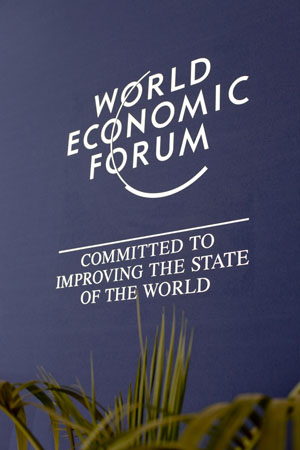In a series of blog posts curated by the World Economic Forum’s Partnering Against Corruption Initiative (PACI), a number of leading voices will present their perspectives on anti-corruption in the run-up to World Anti-Corruption Day on 9 December. In the following post, Elaine Dezenski, Senior Director and Head of PACI, World Economic Forum, underlines the risks of entrenched corruption.
As this week’s World Economic Forum series of blog posts has reinforced, much remains to be done before we achieve a transparent and level playing field for global business, especially in new and emerging markets. The lack of transparency across complex supply chains and far-flung subsidiaries is a particular challenge and one that has been identified by many companies engaged in PACI as an area in need of improvement.
When we discuss global, systemic risks to supply chains, the focus is often on extreme events such as a natural catastrophe, which has been identified consistently as the number one risk in the Forum’s supply chain risk assessments. However, creeping risks such as pervasive entrenched corruption are also of major concern. In 2012, corruption moved from 13th place to ninth in the Forum’s ranking of risks affecting global supply chain.
The availability of shared data and information was identified as one of the top five vulnerabilities to supply chains in this year’s study. External supply chain partners are often small and medium-sized enterprises (SMEs) that may lack the resources and compliance know-how to manage risks, particularly with corruption and bribery. This exacerbates existing vulnerabilities in the system.
To make matters more complicated, there is no plausible deniability for business leaders when it comes to understanding the risks associated with their supply chains. At the same time, standards of transparency vary widely from country to country. They also remain largely outside of the control of organizations to influence on their own when it comes to working in new and emerging markets.
Recognizing this challenge, the recent G20 recommendations proposed in Los Cabos in 2012 included specific references to managing risks associated with SMEs, which are often at a disadvantage when implementing measures to improve compliance and visibility within their own organizations. The B20 recommended that “Companies should engage SMEs through their supply chains, and provide them with concrete support in the adoption of best practices in resisting corruption, including possibly through an industry sector supply chain initiative.”
Transparency is a critical component to build supply chains that are resilient against corruption. If, for example, business-to-business transactions can be made through agreed upon elements of an “integrity pact” and facilitated in a digital environment, then organizations can help each other to set and uphold common standards for solicitation and identify anomalies in the system much more quickly. PACI Members can work together to create incentives for local networks of SMEs to adopt measures for transparency. This creates a web of trust and that helps to build resilience into complex systems, and in turn, helps businesses mitigate a range of risks and potential shocks to their operations.
















 Connect with us on Facebook
Connect with us on Facebook Follow us on Twitter
Follow us on Twitter